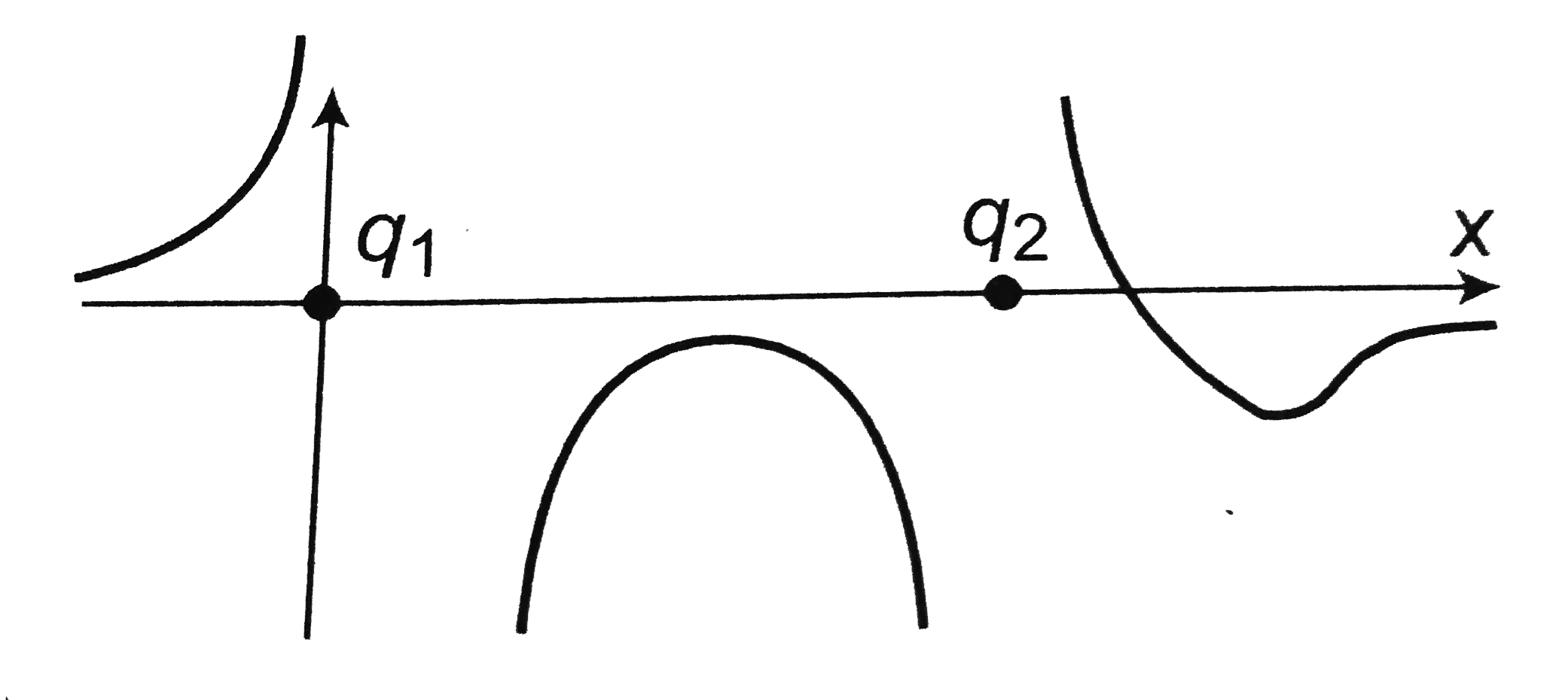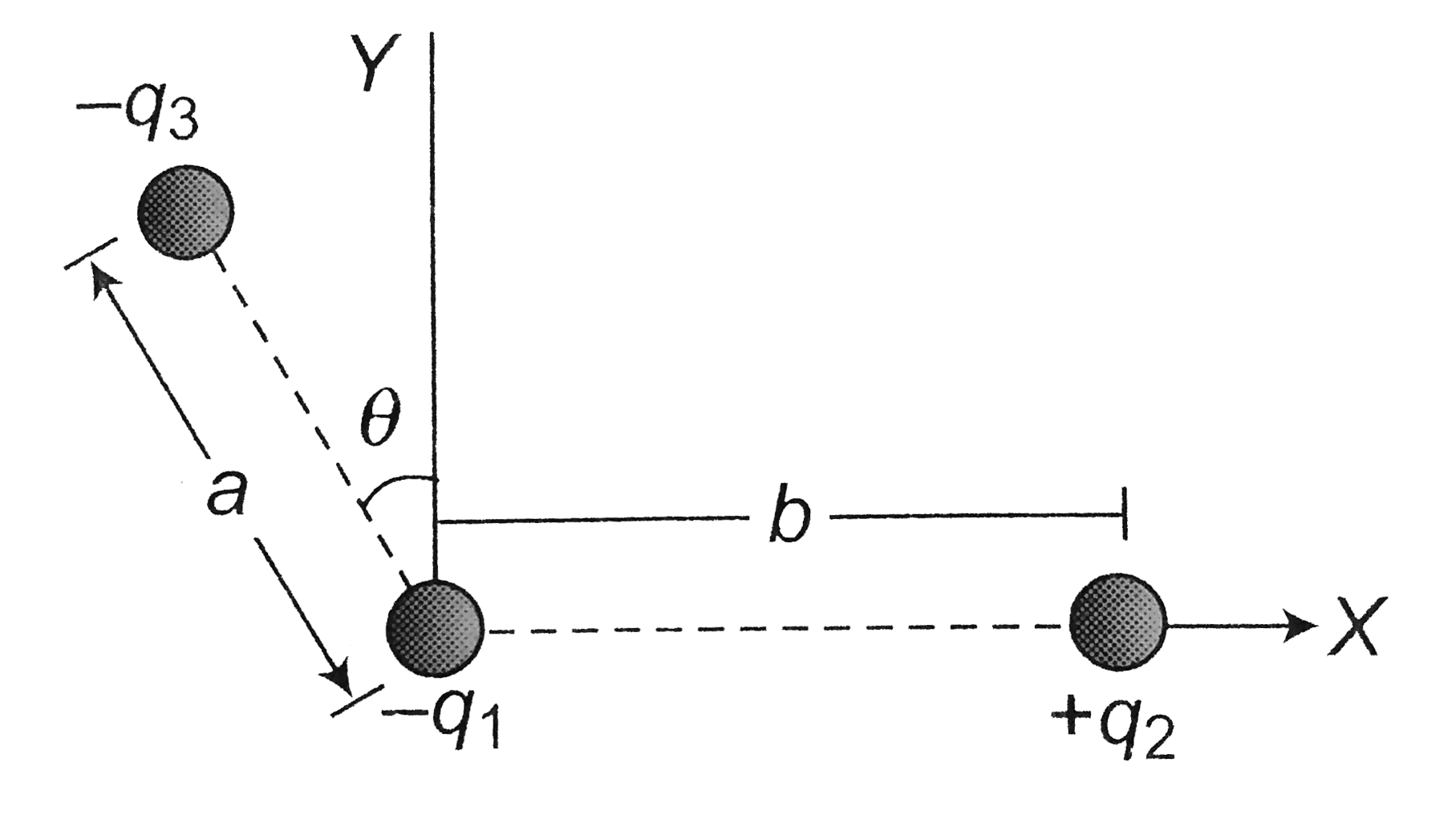In figure two positive charges q2 and q3 fixed along the y-axis ,exert a net electric force in the +x direction on a charge q1 fixed along the x-axis if a positive charge Q is added at (x,0) the force on q1

shall increase along the positive x-axis
shall decrease along the positive x-axis
shall point along the negative x-axis
shall increase but the direction changes because of the intersection of Q with q2 and q3
The correct Answer is:A
As q2,q3 are positive charges and net force on q1 is along +x direction, therefore q1 must be negative as shown in Fig. When a positive charge Q is added at (x,0), it will attract (−q1) along +x direc-tion, Fig, Therefore, force on q1 will increase along the positive x-axis.

Topper's Solved these Questions
- ELECTROSTATICSBOOK - PRADEEPCHAPTER - ELECTROSTATICSEXERCISE - FILL IN THE BLANKS
8 Videos
- ELECTROSTATICSBOOK - PRADEEPCHAPTER - ELECTROSTATICSEXERCISE - PROBLEMS FOR PRACTICE
8 Videos
- ELECTROSTATICSBOOK - PRADEEPCHAPTER - ELECTROSTATICSEXERCISE - VALUE BASED QUESTIONS
7 Videos
- ELECTRONIC DEVICESBOOK - PRADEEPCHAPTER - ELECTRONIC DEVICESEXERCISE - Fill in the Blanks
1 Videos
- MAGNETIC EFFECT OF CURRENT AND MAGNETISMBOOK - PRADEEPCHAPTER - MAGNETIC EFFECT OF CURRENT AND MAGNETISMEXERCISE - Competition Focus (Multiple Choice Questions)
2 Videos
Similar Questions
A positive point charge q1 is placed at (a,0) and another positive point charge q2 is placed at (0,a) . Find the force acting on q1.
View SolutionTwo charges q1 and q2 are kept on x-axis and electric field at different points an x-axis is plotted against x. Choose correct statement about nature and magnitudes of q1 and q2

View Solution
Knowledge Check
In the figure two positive chargesq2 and q3 fixed along the Y-axis, exert a net electric force in the + x direction on a charge q1 fixed along the X-axis. If a positive charge Q is added, at {x, 0), the force on q1
 Ashall increase along the positive X-axisBshall decrease along the positive X-axisCshall point along the negative X-axisDshall increase but the direction changes because of the intersection of Q with q2and q3
Ashall increase along the positive X-axisBshall decrease along the positive X-axisCshall point along the negative X-axisDshall increase but the direction changes because of the intersection of Q with q2and q3The given figure gives electric line of force due to two charges q1 and q2. What are the signs of the two charges ?
 ABoth are negativeBBoth are positiveCq1 is positive but q2 is negativeDq1 is negative but q2 is positive
ABoth are negativeBBoth are positiveCq1 is positive but q2 is negativeDq1 is negative but q2 is positiveA positive point charge (q) is projected along (+x) axis electric field is directed along (-y) axis E=E0(−ˆj) Find trajectory of charge after x = d.
Ay=qE0dm(v0)2⋅(d2−x)By=qfE0dm(v0)2⋅(d2+x)Cy=qE0d2m(v0)2⋅(d2−x)Dy=qE0d2m(v0)2⋅(d2+x)
Two point charges(+Q) and (−2Q) are fixed on the X-axis at position a and 2a from origin respectively. At what position on the axis, the resultant electric field is zero
View SolutionTwo point charges(+Q) and (−2Q) are fixed on the X-axis at position a and 2a from origin respectively. At what position on the axis, the resultant electric field is zero
View SolutionThree charges −q1,+q2 and −q3 are placed as shown in the figure. The x-component of the force on −q1 is proportional to

View SolutionThree charges −q1,+q2 and −q3 are placed as shown in the figure. The x-component of the force on −q1 is proportional to

View SolutionThe given figure gives electric line of force due to two charges q1 and q2. What are the signs of the two charges ?

View Solution
